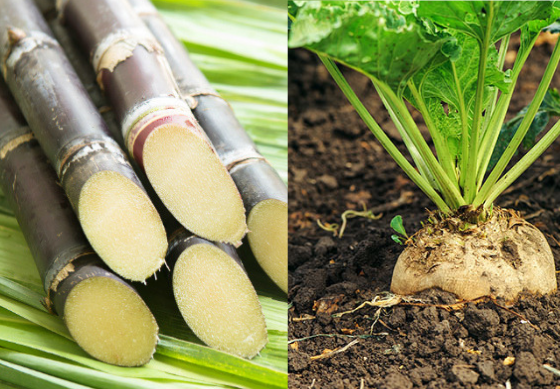Many chefs specify either beet sugar vs cane sugar, depending on the desired outcome.
Discover the Uses and Conveniences of Beet Sugar Vs Cane Sugar in Your Daily Diet
Exploring the unique top qualities of beet and cane sugar exposes more than simply their sweetening capacities; it highlights their one-of-a-kind impacts on health and cooking arts. Beet sugar, known for its refined flavor, is commonly preferred in fragile treats, whereas cane sugar, with its hint of molasses, includes splendor to robust dishes. Each kind holds its own dietary account and glycemic implications, welcoming a much deeper understanding of their functions in a well balanced diet and sustainable consumption techniques.
Beginning and Manufacturing Procedures of Beet and Cane Sugar

The unique environments and dirt types needed for expanding sugar beetroots and sugarcane contribute to differences in their growing techniques and geographic distribution, influencing the economics and sustainability of their manufacturing. beet sugar vs cane sugar.
Nutritional Contrast In Between Beet Sugar and Cane Sugar
Despite originating from different plants, beet sugar and cane sugar are nutritionally extremely comparable, both largely being composed of sucrose. Each gives concerning 4 calories per gram, translating to roughly 16 calories per teaspoon. Structurally, both sugars are composed of about 99.95% sucrose, with very little quantities of various other compounds like wetness and trace element, which do not significantly change their nutritional profiles.

Ultimately, when choosing between beet sugar and cane sugar based on nutritional material alone, both deal the same advantages and downsides as they are basically kinds of the very same particle-- sucrose, providing quick energy without other nutrients.
Impact on Wellness: Glycemic Index and Caloric Material
Checking out additionally into the impacts of beet sugar and cane sugar on health and wellness, it is very important to consider their glycemic index and caloric content. Both sugars are categorized as sucrose, which is composed of glucose and fructose. This composition leads them to have a comparable influence on blood glucose levels. The glycemic index (GI) of both beet and cane sugar is around 65, categorizing them as high-GI foods, which can cause fast spikes in blood sugar degrees. This is a crucial facet for people managing diabetes or those attempting to stabilize their power degrees throughout the day.
Each type of sugar contains around 4 calories per gram, making their caloric web content equivalent. For those monitoring calorie intake, particularly when managing weight or metabolic health and wellness conditions, comprehending this equivalence is vital (beet sugar vs cane sugar). Extreme consumption of any high-calorie, high-GI food can add to health problems such as excessive weight, heart disease, and insulin resistance.
Environmental and Economic Factors To Consider of Sugar Manufacturing
Beyond health and wellness effects, the production of beet and cane sugar likewise increases considerable environmental and economic issues. Sugar beet growing has a tendency to call for cooler environments and has a reduced geographical impact contrasted to sugar cane, which prospers in tropical regions.
Additionally, the use of pesticides and fertilizers in both beet and cane sugar farming can bring about dirt degradation and contamination, additional affecting biodiversity and regional water bodies (beet sugar vs cane sugar). The choice in between growing sugar beet or cane frequently depends upon local ecological problems and economic factors, making the sustainability of sugar manufacturing a complicated problem
Culinary Applications and Flavor Distinctions
While the ecological and economic facets of sugar production are without a doubt considerable, the choice in between beet and cane sugar also affects culinary applications and taste profiles. Beet sugar, acquired from the sugar beet plant, is understood for its extremely neutral taste.
Walking cane sugar, drawn out from sugarcane, often preserves molasses traces, which pass on a distinct richness and deepness. This slight molasses more helpful hints taste boosts the intricacy of baked items, sauces, and marinates. It is specifically favored in products where a sugar touch is desired, such as in brownies or gingerbread. The minor Discover More variant in wetness material in between beet and cane sugar can affect the appearance and uniformity of dishes, making cane sugar a favored selection for specific recipes that benefit from its one-of-a-kind residential or commercial properties.

Verdict
Finally, both beet and cane sugar have distinctive beginnings and production processes, offering similar dietary accounts with minor differences in sodium web content and taste. While their effect on health and wellness, especially concerning glycemic index and calories, is comparable, the selection in between them usually comes down to ecological, economic aspects, and particular cooking demands. Comprehending these facets can assist consumers in why not look here making informed choices that line up with their health objectives and flavor choices.